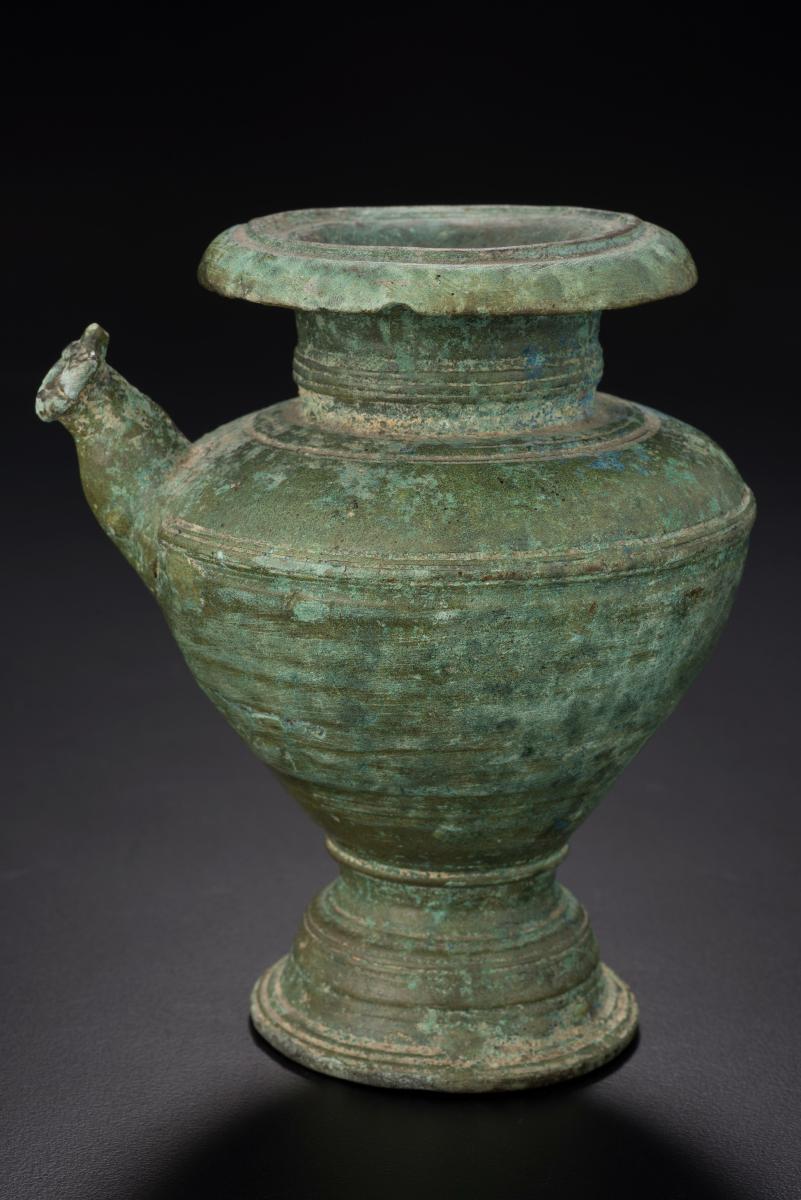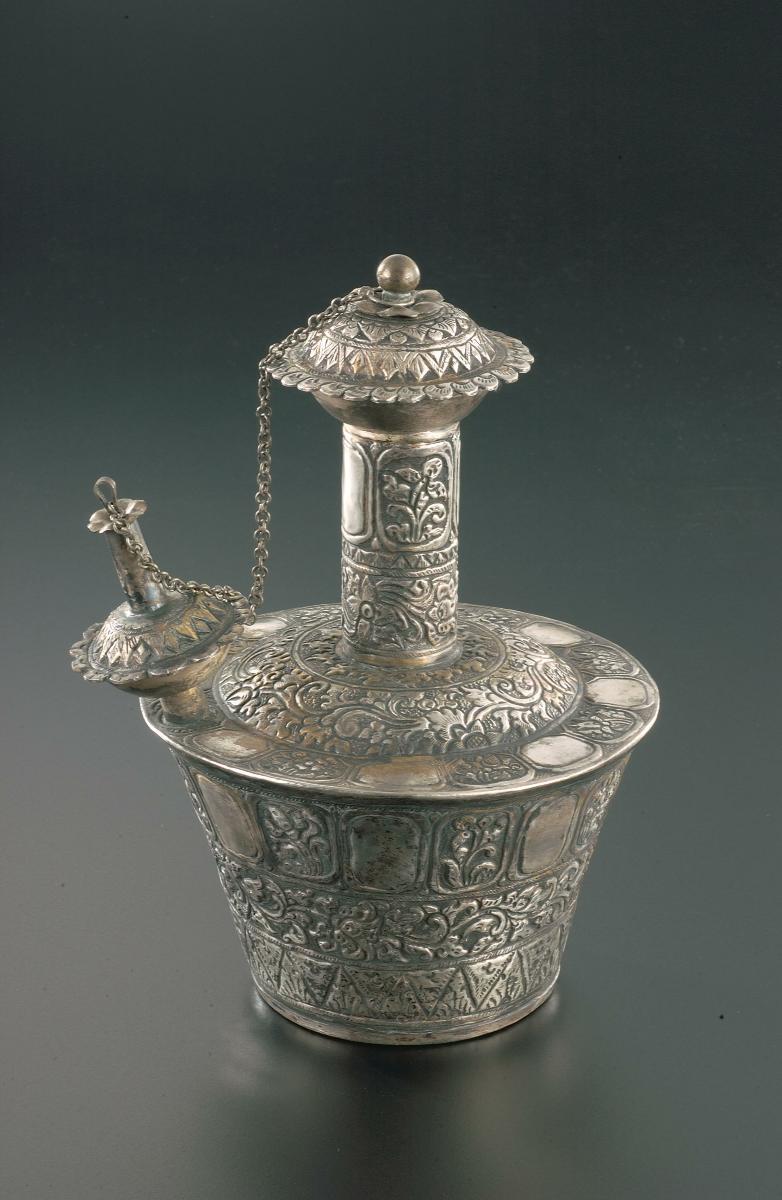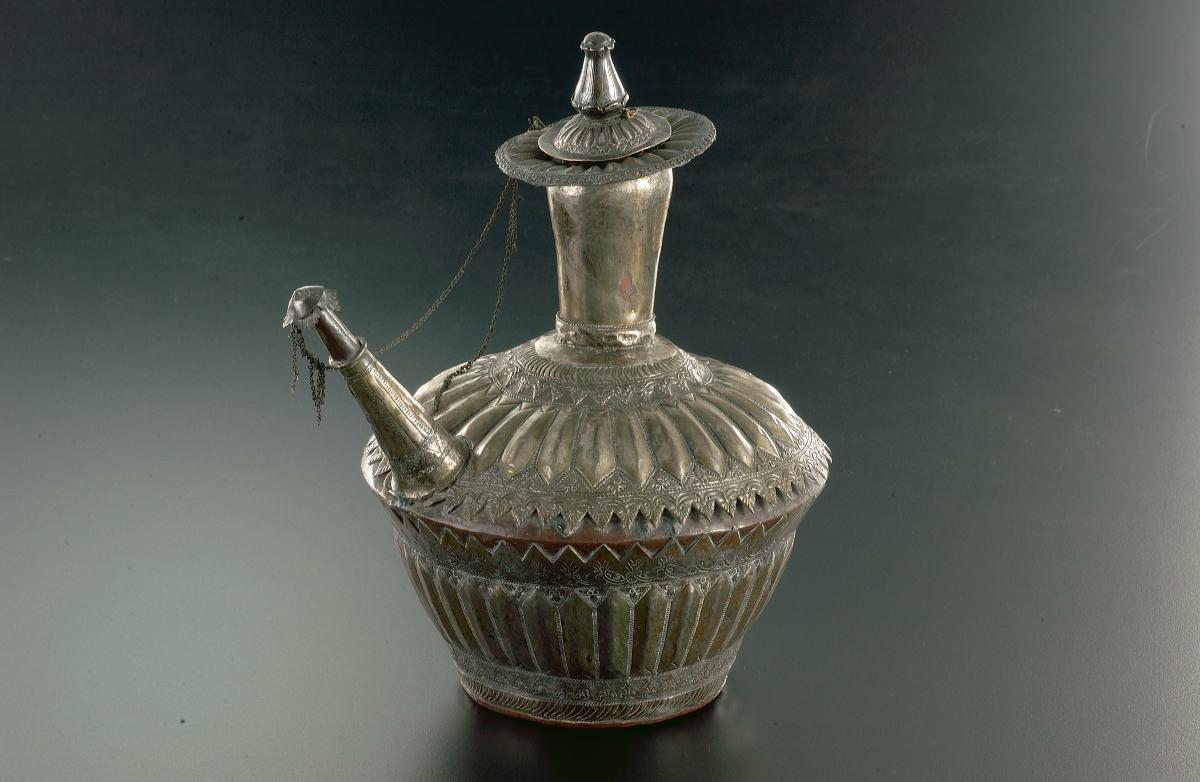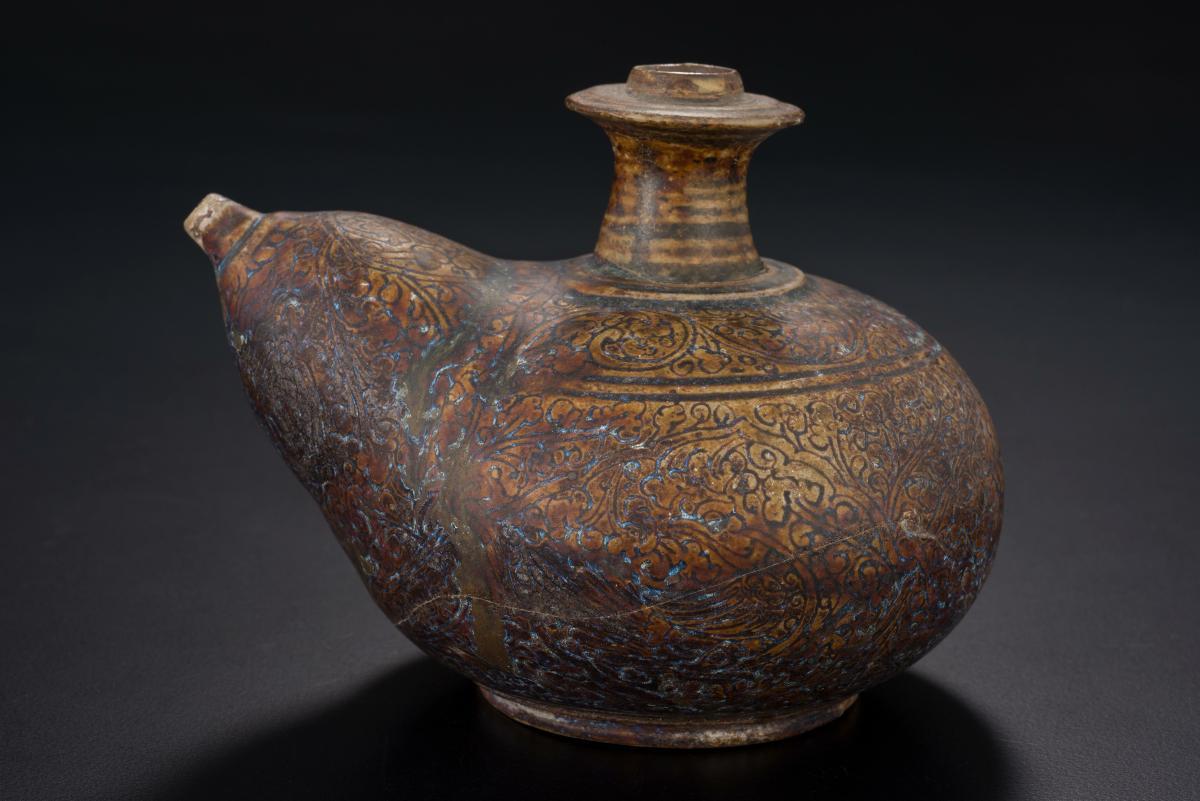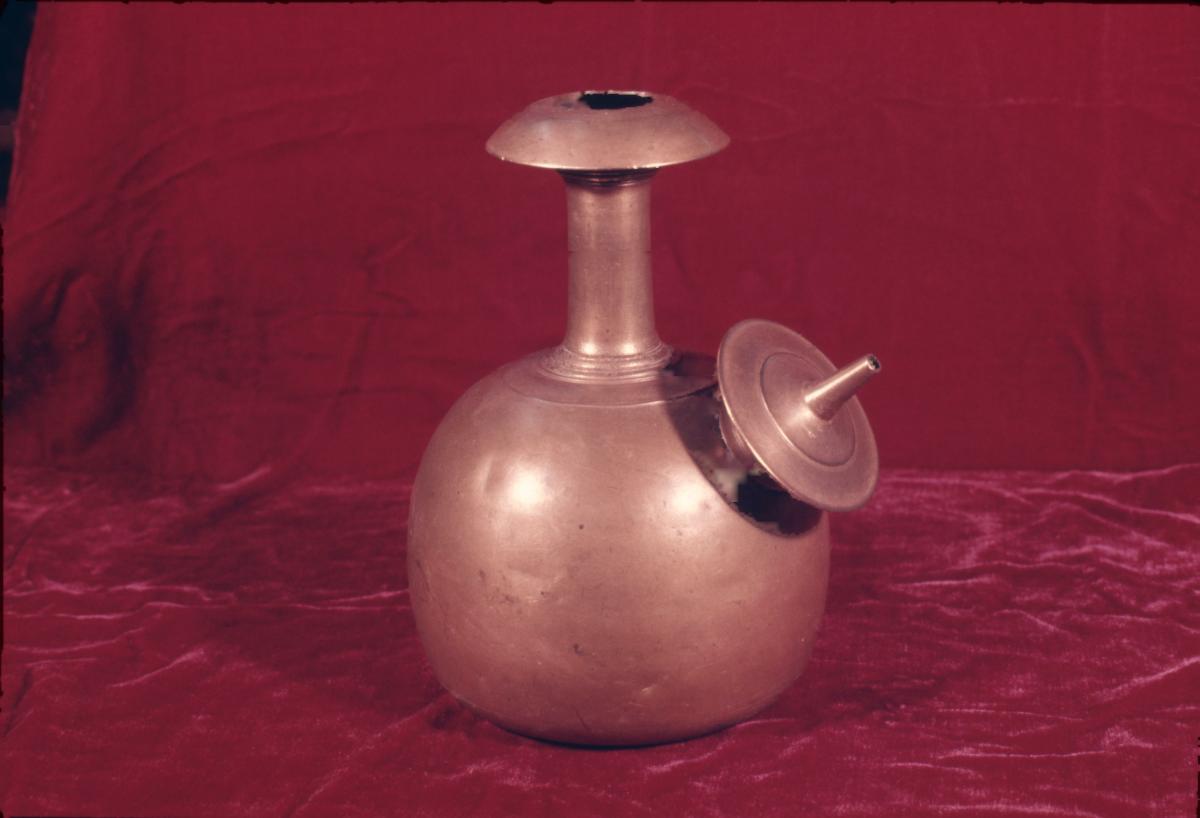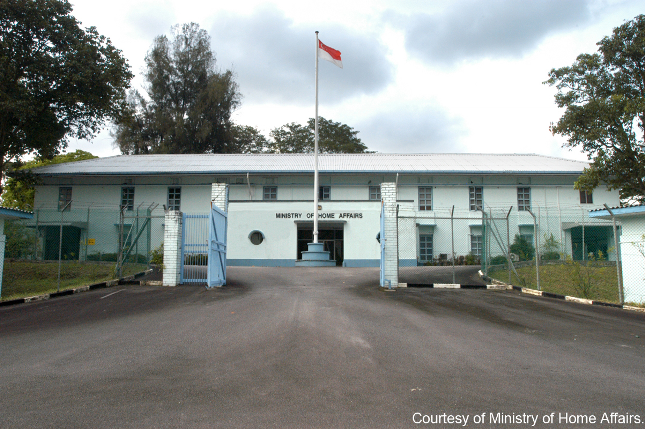This heavily cast bronze vessel is a form that derived from Indian ritual water-pouring vessels known as ‘kundika’. The ‘kendi’ as it is known in Southeast Asia, was reproduced in metal and ceramics in many parts of the region. Its S-shaped spout with everted mouth is thought to be inspired by an elephant’s trunk, perhaps in association with the worship of Lakshmi, the wife of Vishnu. Champa was one of the earliest regions in Southeast Asia to adapt Indian cultural influences. Hindu temples were built as early as the late 4th century. Brick temples dedicated to royal ancestors, stone sculptures and precious metal images and jewellery, are amongst the important material legacy of Champa. Stylistic similarities with Indian, Chinese and regional traditions are often seen, reflecting the important role that Champa played in trade and other exchanges that took place with these cultures.




